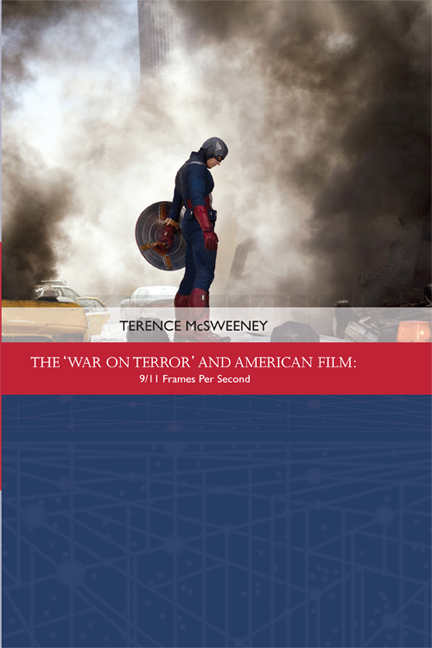Book contents
- Frontmatter
- Contents
- List of Illustrations
- Acknowledgements
- Introduction
- 1 The Lives of Others: Vulnerability in Post-9/ 11 American Cinema
- 2 Boots on the Ground: The New Millennial Combat Film as Cultural Artefact
- 3 ‘Masters of our own Security’: Redemption through Violence in the Post-9/ 11 Action Genre
- 4 Turning to the Dark Side: Challenging American Mythology in the Superhero Genre
- 5 Remaking 9/11: Imagining the Unimaginable in the Alien- invasion Film
- 6 Decade of the Dead: Zombie Films as Allegory of National Trauma
- 7 The Rise and Fall of Empires: The ‘War on Terror’ as Allegorical Moment in Historical Film
- Conclusion
- Bibliography
- Select Filmography
- Index
6 - Decade of the Dead: Zombie Films as Allegory of National Trauma
Published online by Cambridge University Press: 05 August 2016
- Frontmatter
- Contents
- List of Illustrations
- Acknowledgements
- Introduction
- 1 The Lives of Others: Vulnerability in Post-9/ 11 American Cinema
- 2 Boots on the Ground: The New Millennial Combat Film as Cultural Artefact
- 3 ‘Masters of our own Security’: Redemption through Violence in the Post-9/ 11 Action Genre
- 4 Turning to the Dark Side: Challenging American Mythology in the Superhero Genre
- 5 Remaking 9/11: Imagining the Unimaginable in the Alien- invasion Film
- 6 Decade of the Dead: Zombie Films as Allegory of National Trauma
- 7 The Rise and Fall of Empires: The ‘War on Terror’ as Allegorical Moment in Historical Film
- Conclusion
- Bibliography
- Select Filmography
- Index
Summary
At some point we may be the only ones left. That's okay with me. We are America.
George W. Bush cited in Woodward, State of Denial: Bush at WarThe zombies represent the suppressed tensions and conflicts – the legacy of the past, of the patriarchal structuring of relationships, ‘dead’ yet automatically continuing – which that order creates and on which it precariously rests.
Robin Wood, Hollywood from Vietnam to ReaganThe 1990s was arguably a lacklustre decade for American horror, defined by the proliferation of sequel after sequel and ironic meta-narratives that served only to dilute the genre of the visceral power that had characterised the greatest horror films of the 1970s and 1980s. Once ferocious texts like The Texas Chainsaw Massacre, Halloween (1978) and A Nightmare on Elm Street (1984) saw themselves transformed into franchises, almost parodies of themselves, manufactured to eviscerate and titillate the teenagers who simultaneously populated the films and went to see them at their local multiplexes. The most commercially successful horror films of the 1990s were the ironic Scream series (1996–2011), a virtual disquisition and almost parody of the horror genre itself, which was then spoofed in Scary Movie (2000) and its four sequels, as the genre seemed to be in danger of virtually consuming itself.
Just as violent action films came under heavy criticism in the wake of 9/11, many also called for an end to the frequently gratuitous and sadistic horror genre (see Brown 2001). However, like the action film, horror did not go away. Indeed, it was positively rejuvenated in the first decade of the new millennium; the fact that this was the war on terror era was certainly not a coincidence. While the trend for sequels and remakes gained an even greater pace, the horror film experienced something of a renaissance in the post-9/ 11 decade with filmmakers using the genre as a platform to express their concerns about many of the crucial issues of the fractious decade, just as the defining horror films of the 1960s and 1970s like Night of the Living Dead (1969), Rosemary's Baby (1968), The Exorcist (1973) and The Texas Chainsaw Massacre had once done before.
- Type
- Chapter
- Information
- The 'War on Terror' and American Film9/11 Frames Per Second, pp. 157 - 174Publisher: Edinburgh University PressPrint publication year: 2014

